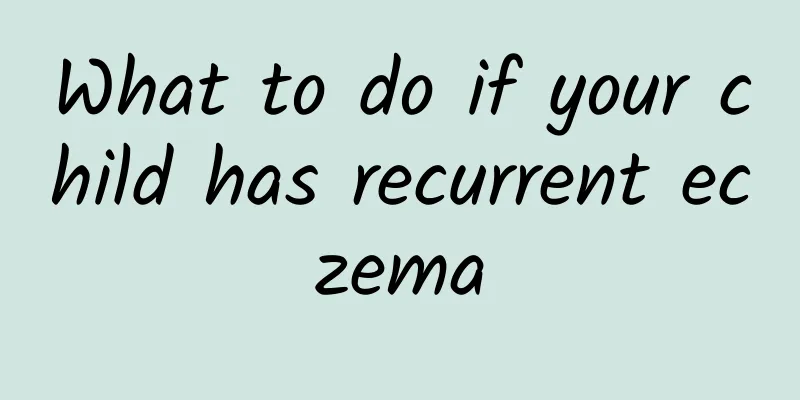How to treat a dislocated shoulder

|
Shoulder dislocation is a relatively common symptom, which is related to the physiological characteristics of the shoulder joint. Among all dislocations, when dislocation of the middle joint accounts for more than 50%, when dislocation occurs, joint reduction treatment should be performed in time. In addition, we should pay more attention to health care in our daily life to avoid frequent dislocations, which are harmful to our health, especially causing great damage to the nerve tissue of the shoulder joint. How to treat a dislocated shoulder 1. Manual reduction After dislocation, reduction should be performed as soon as possible, and appropriate anesthesia (brachial plexus anesthesia or general anesthesia) should be selected to relax the muscles and allow reduction to be performed painlessly. Elderly people or those with weak muscles can also undergo the procedure under the influence of analgesics. Habitual dislocation does not require anesthesia. The reduction technique should be gentle, and rough techniques are prohibited to avoid additional injuries such as fractures or nerve damage. There are three commonly used resetting techniques. (1) Foot push method The patient lies on his back, the surgeon is on the affected side, holds the wrist of the affected limb with both hands, places the heel in the armpit of the affected side, and uses steady and continuous traction with both hands, pushing the humeral head outward with the heel while rotating and adducting the upper arm to reduce the position. A sound can be heard when resetting. (2) Koch method This method is easier to succeed when the muscles are relaxed. Do not use excessive force to prevent the humeral neck from being subjected to excessive torsional force and causing fractures. Technique steps: Hold the wrist with one hand, bend the elbow to 90 degrees to relax the biceps, hold the elbow with the other hand, continue to pull, slightly abduct, gradually rotate the upper arm outward, then adduct so that the elbow is along the midline of the chest wall, and then internally rotate the upper arm, now it can be repositioned. And noises can be heard. (3) Traction massage The injured person lies on his back, one assistant covers the chest with a sheet and pulls it toward the healthy side, the second assistant covers the affected limb with a sheet through the armpit and pulls it outward and upward, the third assistant holds the wrist of the affected limb, pulls it downward and rotates it outward and adducts it inward, and the three assistants pull slowly and continuously at the same time. The surgeon uses his hand under the armpit to push the humeral head outward and reduce it into position. Two people can also do traction reduction. After reduction, the shoulder returns to its normal blunt, round and plump shape, and the dislocated humeral head can no longer be felt in the axilla, under the coracoid process or under the clavicle. The shoulder test becomes negative, and X-ray examination shows that the humeral head is in the normal position. If combined with an avulsion fracture of the greater tuberosity of the humerus, since the fracture fragment is often connected to the humeral shaft by periosteum, in most cases, the avulsed greater tuberosity bone fragment will be reduced after the shoulder dislocation is reduced. Post-reduction treatment: After reduction of anterior shoulder dislocation, the affected limb should be kept in the adducted and internally rotated position, with a cotton pad placed in the armpit and then fixed to the chest with a triangular bandage, bandage or plaster. After 3 weeks, the shoulder can be gradually swung and rotated, but excessive abduction and external rotation should be avoided to prevent re-dislocation. After reduction, a posterior dislocation is fixed in the opposite position (i.e., abduction, external rotation, and posterior extension). 2. Surgical reduction A small number of shoulder dislocations require surgical reduction. The indications are: anterior shoulder dislocation complicated by posterior slippage of the long head of the biceps tendon that hinders manual reduction; avulsion fracture of the greater tuberosity of the humerus, with the fracture fragment stuck between the humeral head and the glenoid fossa affecting reduction; combined with a fracture of the surgical neck of the humerus that cannot be reduced by manipulation; combined with fractures of the coracoid process, acromion or glenoid fossa with obvious displacement; combined with injury to the great blood vessels in the axilla. 3. Treatment of old shoulder dislocation If the shoulder dislocation has not been reduced for more than three weeks, it is considered a chronic dislocation. The joint cavity is filled with scar tissue, there is adhesion with surrounding tissues, the surrounding muscles are contracted, and callus or malformation healed in patients with fractures. These pathological changes hinder the reduction of the humeral head. Treatment of chronic shoulder dislocation: Manual reduction can be tried if the dislocation is within three months, the patient is young and strong, the dislocated joint still has a certain range of motion, and the X-ray shows no osteoporosis and internal or external ossification of the joint. Before reduction, traction can be performed on the affected side of the ulnar olecranon for 1 to 2 weeks; if the dislocation time is short and the joint movement disorder is mild, traction may not be required. |
<<: How to treat calcified tendon of shoulder joint
>>: How long does it take for a shoulder dislocation to heal?
Recommend
How to Treat Chronic Bronchitis
Chronic bronchitis is a chronic disease caused by...
How do brain tumor patients receive postoperative care and rehabilitation training?
The incidence of brain tumors in my country basic...
Ten-month-old baby has red bloodshot eyes
Babies need a lot of rest. If there are red blood...
How to cure headaches
Headaches are common in life and there are many c...
Symptoms of influenza A (H1N1)
Everyone knows that colds are caused by viruses. ...
What medicine should I take for bloating and diarrhea?
People often feel bloated. The feeling of bloatin...
How to clear your neck and shoulders yourself
If you have a disease in your shoulder and neck, ...
How to make kidney-tonifying soup with medicinal ingredients?
The kidney is one of the most important organs in...
Swollen tonsils
Enlarged tonsils are an abnormal disease phenomen...
What is the reason for the black and purple toenail?
If you find black and purple inside your toenails...
Effects of Sanfutian moxibustion
Once we enter the dog days of summer, everyone sh...
What to do if your child often gets angry
Because most areas in the north are heating, the ...
How to regulate qi deficiency
Qi deficiency refers to physical weakness, pale c...
How to make the batter for Cantonese rice noodle rolls
Everyone must have eaten rice rolls, which is a p...
How to cure obsessive-compulsive disorder
Obsessive-compulsive disorder is quite common in ...









